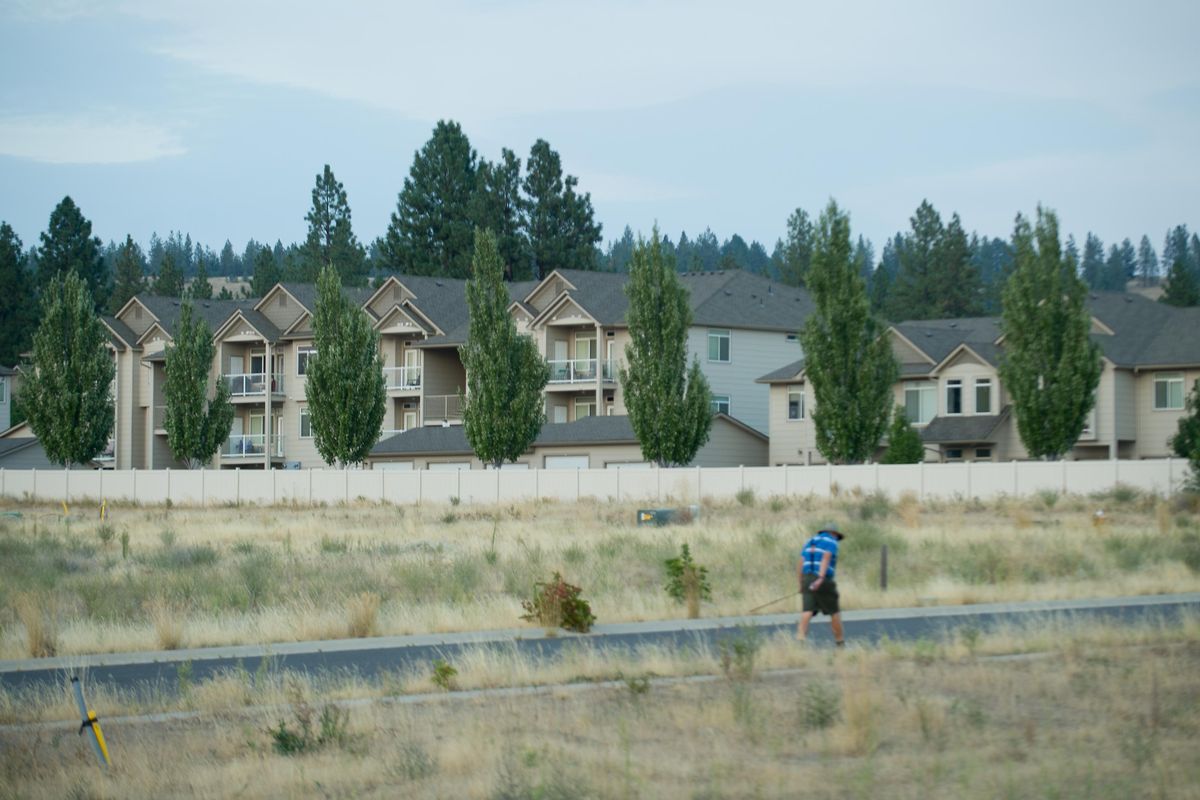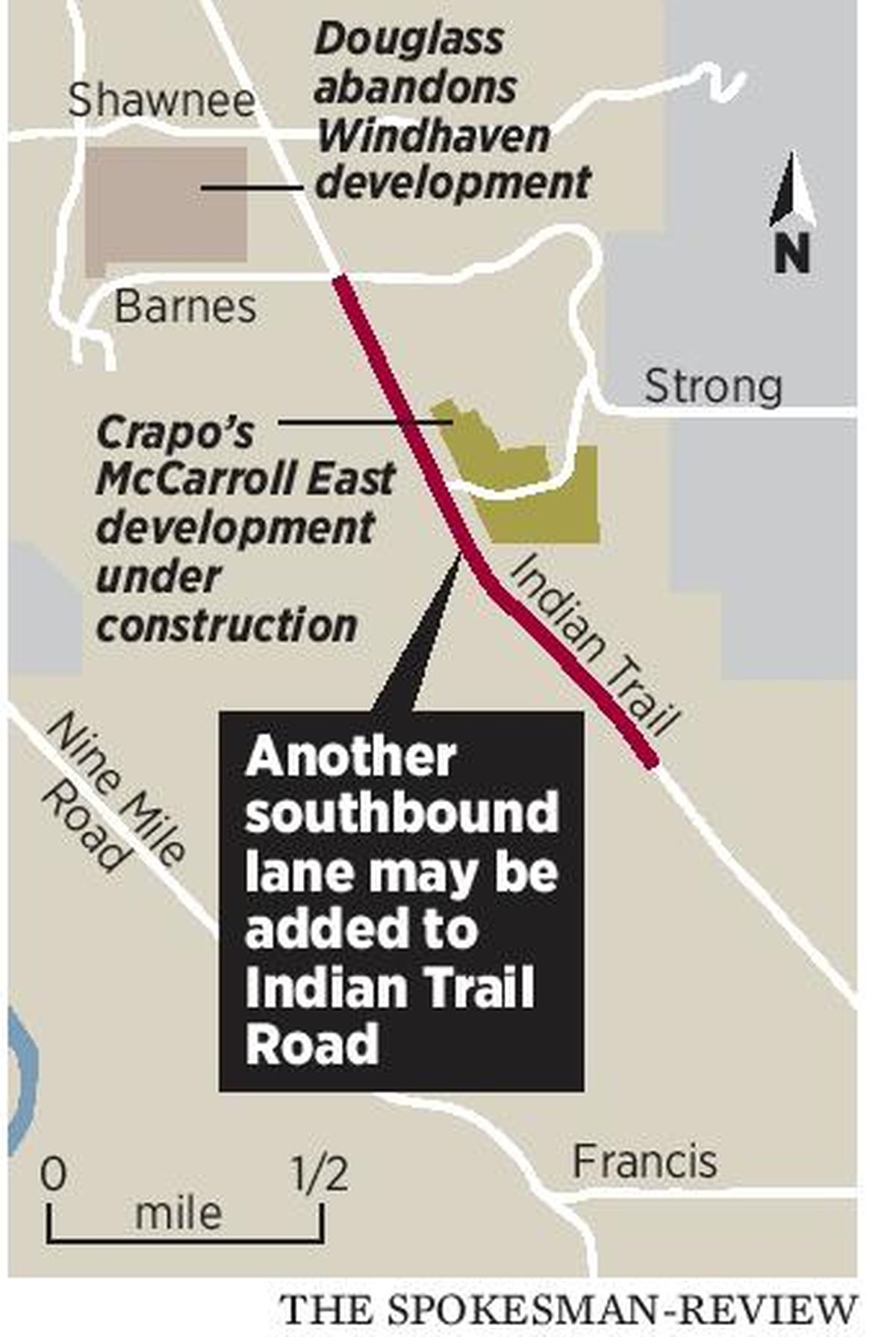Getting There: New traffic lane coming to Indian Trail
The Indian Trail neighborhood is seen on Tuesday, Sept. 12, 2017, in Spokane, Wash. (Tyler Tjomsland / The Spokesman-Review)Buy a print of this photo
Fear not, commuters in northwest Spokane: Your extra traffic lane on Indian Trail is coming.
For motorists in that affluent corner of the city, it’s a long time coming. Nestled between the high land of Five Mile Prairie and the Spokane River, the Indian Trail neighborhood has exactly one major road: Indian Trail.
Which means the 8,000 people who live there have just one arterial road to traverse to get anywhere. And much of it is one lane each way, so it makes sense that the city wants to add another.
But the plan does raise a question: Why is the city adding a lane to Indian Trail, which sees an average daily traffic count of about 17,000 vehicles, while it’s taking out traffic lanes on North Monroe, which has a daily count of about 18,000 vehicles?
“It’s a complicated process,” said Inga Note, a traffic engineer with the city working on the Indian Trail project. “I don’t even like to compare the two.”
An aversion to comparing anything to the Monroe project is wise, considering the howls of protests some business owners have issued about it.
The Indian Trail road project stems from a proposed apartment development, and worries from neighbors that the already congested street would be unmanageable with the addition of 750 new apartments. Though that project was abandoned last month, city plans for adding a new $1.3 million southbound lane on Indian Trail already had been envisioned and designed. It will remain in this year’s upcoming roadwork plan, Note said. The center turn lane will remain, and a northbound lane is not yet on the books.
Note said the Indian Trail neighborhood needs the extra lane because traffic counts are growing there, where the median household income of $88,000 is nearly double the city’s average. That and the fact that there’s just one major road there.
The growing population has pushed the street to its limits, Note said. She assured the new lane will not be a case of “induced demand,” the economic theory describing the phenomenon of increasing supply leading people to want a thing more. More demand puts pressure to increase the supply and, well, you see where this is headed.
In transportation planning, that phenomenon was once called “traffic generation” and has long been recognized as an argument against adding lanes to congested freeways.
The thinking is that you can’t build your way out of traffic. Roads cause traffic. Building more roads causes more traffic. Like all good economic theory, the phenomenon is backed by data. In 2009, two economists from the University of Toronto and the University of Pennsylvania compared new highway construction in U.S. cities between 1980 and 2000 with the number of miles driven in those cities. They increased in a one-to-one relationship, in perfect lockstep. In other words, the amount of congestion didn’t change.
An article in Wired magazine explained the idea this way: Adding lanes is not like a pipe being replaced with a larger pipe to allow the same amount of water to flow. Instead, the larger pipe draws more water into it, filling it to capacity. As the article says, roads allow people to move around – and we love moving around, so we’ll fill up those roads.
The article also speaks to the situation on Monroe.
“Whenever some city proposes taking lanes away from a road, residents scream that they’re going to create a huge traffic snarl,” the article says. “But the data shows that nothing truly terrible happens. The amount of traffic on the road simply readjusts and overall congestion doesn’t really increase.”
So why exactly is the city proposing a lane reduction on Monroe?
Though the street has been a principal road since the automobile came to Spokane, it’s used less and less. In 1985, Monroe saw nearly 33,000 vehicles a day. But motorists have seen an increase in the diversity of arterial choices heading north or south – Maple, Ash, Alberta, Driscoll, Northwest Boulevard and Assembly to its west; Wall, Division, Ruby, Addison, Nevada, Crestline, Market and Freya to the east.
The plethora of roads has caused Monroe’s traffic counts to plummet, cutting the number of cars the road carries in half over the past 30 years.
Of course, not everyone supports removing lanes from Monroe between Northwest Boulevard and the base of North Hill. Construction on the project will start this year and is scheduled to be completed by fall. Reaction to the plan by the city is decidedly ambivalent.
A survey done by the city last year showed 69 percent of the 677 respondents support the project. But an informal survey of nearby business owners done by The Spokesman-Review in October found a mix of support and opposition. Of the 38 businesses that agreed to respond, 22 were against the project and 16 were for it. Another 18 chose not to respond, or the owner or manager wasn’t present to speak on the matter.
On Indian Trail, that type of ambivalence is unlikely. But next time cars back up at the street’s intersection with Francis, we’ll knock on some windows and ask.

